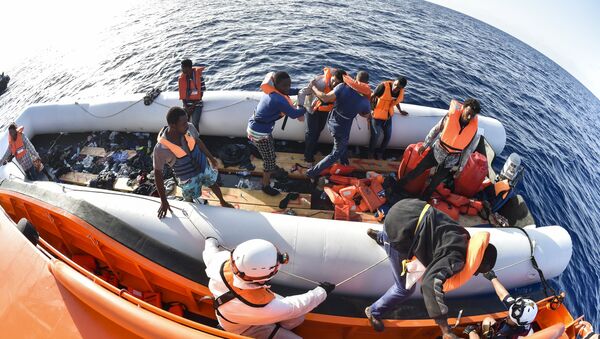Malta hosted the International Summit on Migration in Valletta, November 2015, in an attempt to rally support for a common approach to the root causes of migration, with plans to address destabilization, forced displacement and irregular migration in Africa, by promoting economic and equal opportunities, strengthening resilience of vulnerable people, security and development.

However, more than a year on, the latest estimate from the International Organization for Migration (IOM) shows that over half a million sea-borne migrants have entered Europe via the Central Mediterranean route linking North Africa to Italy. This year's totals almost certainly will top 180,000 — making 2016 the busiest year for this route since the current migration emergency began.
Rescue ship rescued 114 #migrants from the Mediterranean including 22 children, of whom 16 were unaccompanied https://t.co/5WvSnaoMRd pic.twitter.com/w36z5hr3Jq
— IOM (@UNmigration) January 3, 2017
According to the IOM, 358,403 migrants and refugees entered Europe by sea in 2016 through 21 December, arriving mostly in Greece and Italy. The 4,913 deaths in the Mediterranean through December 21 indicate a 2016 average daily death toll of nearly 14 men, women and children per day.
Every migrant has a name. Every migrant has a story. Let’s not forget them. #Together #ForMigration pic.twitter.com/36cOvspBAq
— IOM United Kingdom (@IOM_UK) 21 December 2016
Undetected Drownings
IOM believes many more deaths at sea may have gone unreported this year — in the Mediterranean and elsewhere — particularly between North Africa to Spain, where data collection this year has been sporadic and many smaller vessels are believed to have been lost without detection.
"This tragedy reminds us that the humanitarian emergency involving thousands of people dying while trying to flee Libya is not over. In 2016 the number of arrivals by sea in Italy has kept growing, but the number of migrants dying is up dramatically: over 5,000 people have died in 2016, compared to 3,777 deaths registered in the same period last year," said IOM Rome spokesperson Flavio Di Giacomo.
"That is nearly more than 2,000 more than in 2014, another year when over 3,000 men, women and children were lost on this dangerous passage," he added.
8 @TEDTalks on why it's important to help refugees thrive, including 2 by @AntonioGuterres and @MelissarFleming https://t.co/eZKuWyxkDG
— UN Refugee Agency (@Refugees) 2 January 2017
The Maltese Government says it will keep up pressure on EU member states to strengthen the Common European Asylum System, revise the Dublin Regulation (which stipulates that refugees mist be processed in the EU country of arrival) and make the European Asylum Support Office into a fully-fledged European agency.


